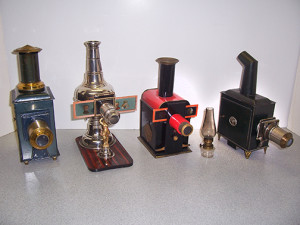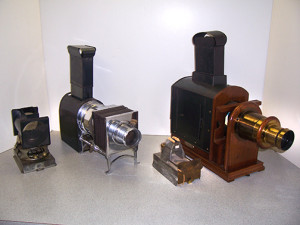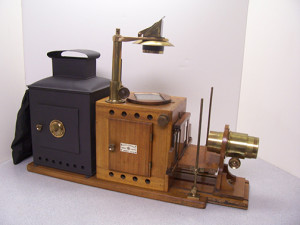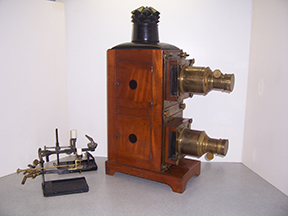Lanterns came in a bewildering variety of sizes and shapes, but can be divided into two large classes, those for children, and those for adults.
 Children’s toy lanterns are shown here in various shapes, colors, and sizes. Also shown is a typical small oil lamp used in such lanterns. There were many other varieties, most produced in Germany, England, and France from the 1800s to the 1930s. Similar lanterns were also produced in the United States, but most used in America were of foreign origin. They were purchased by the tens of thousands a year.
Children’s toy lanterns are shown here in various shapes, colors, and sizes. Also shown is a typical small oil lamp used in such lanterns. There were many other varieties, most produced in Germany, England, and France from the 1800s to the 1930s. Similar lanterns were also produced in the United States, but most used in America were of foreign origin. They were purchased by the tens of thousands a year.
 This image is of two small lanterns for adults. They are American-made with a single-lens, utilizing two or three wick oil burners. Typical burners are also shown. These lanterns were popular with traveling showmen, fraternal lodges, schools, and in the home, and were produced from the second half of the 1800s into the early 1900s. Many shapes, sizes, configurations, and materials were used. Oil burners were popular with traveling showmen, especially in rural areas where neither electricity nor adequate supplies of gases were easily available for the production of limelight. Cost, safety, and ease of use were important considerations for these showman.
This image is of two small lanterns for adults. They are American-made with a single-lens, utilizing two or three wick oil burners. Typical burners are also shown. These lanterns were popular with traveling showmen, fraternal lodges, schools, and in the home, and were produced from the second half of the 1800s into the early 1900s. Many shapes, sizes, configurations, and materials were used. Oil burners were popular with traveling showmen, especially in rural areas where neither electricity nor adequate supplies of gases were easily available for the production of limelight. Cost, safety, and ease of use were important considerations for these showman.
 This image is of a popular form of horizontal science lantern, which is capable of direct slide projection through the front lens, and an early form of overhead projection through the prism on top. The overhead arrangement allowed projection of objects or specimens placed on the horizontal platform below the prism. This type lantern was produced from the late 1800s to the early 1900s. It had an electrical light bulb as a source of illumination, but horizontal science lanterns were also available with oil or limelight illumination. Other forms of science lanterns were made in several countries, with many attachments for varying uses.
This image is of a popular form of horizontal science lantern, which is capable of direct slide projection through the front lens, and an early form of overhead projection through the prism on top. The overhead arrangement allowed projection of objects or specimens placed on the horizontal platform below the prism. This type lantern was produced from the late 1800s to the early 1900s. It had an electrical light bulb as a source of illumination, but horizontal science lanterns were also available with oil or limelight illumination. Other forms of science lanterns were made in several countries, with many attachments for varying uses.
 The pictured lantern is a “biunial” (two lens lantern) of British origin. These devices were popular for showmen, and in institutions of higher learning, where they could be used to project images relating to botany, biology, chemistry, physics and electrical activity. Live specimens could also be shown in vertical tank slides. This lantern is an example of many produced in the late 1800s into the early 1900s in Great Britain, Germany, France, and the United States. (American lanterns of this type were usually all-metal, often with a chrome finish and a bellows.) With two lenses and two light sources the operator could dissolve from one image to the next without a flash of light or a black screen. A valuable feature of this arrangement was the ability to show one image superimposed on the other. The light sources used varied from limelight to electrical or arc light. The lowering of one light and brightening of the other by turning a valve or switching allowed the dissolving effect. Two limelight burners are pictured with the lantern.
The pictured lantern is a “biunial” (two lens lantern) of British origin. These devices were popular for showmen, and in institutions of higher learning, where they could be used to project images relating to botany, biology, chemistry, physics and electrical activity. Live specimens could also be shown in vertical tank slides. This lantern is an example of many produced in the late 1800s into the early 1900s in Great Britain, Germany, France, and the United States. (American lanterns of this type were usually all-metal, often with a chrome finish and a bellows.) With two lenses and two light sources the operator could dissolve from one image to the next without a flash of light or a black screen. A valuable feature of this arrangement was the ability to show one image superimposed on the other. The light sources used varied from limelight to electrical or arc light. The lowering of one light and brightening of the other by turning a valve or switching allowed the dissolving effect. Two limelight burners are pictured with the lantern.
Though not shown, some lanterns were made with three lenses, and light sources, and were referred to as triunials. Such devices allowed for additional special effects or dissolves. These lanterns were, and are, extremely rare.
Collections of lanterns can be viewed at the Richard Balzer Collection, and San Diego State University.
Lantern images, © The Jack Judson Collection of The Magic Lantern Castle Museum